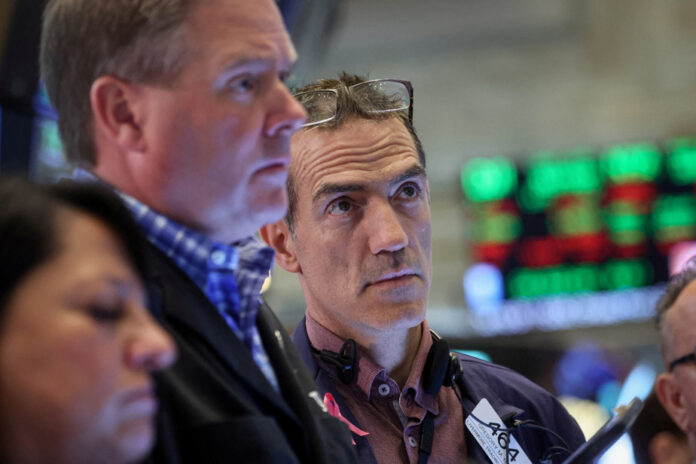(New York) The New York Stock Exchange ended mixed on Thursday, with the technology sector weighed down by Apple while investors gauge the trajectory of interest rates from the Federal Reserve (Fed).
The Dow Jones finished in the green, gaining 0.17% to 34,500.73 points. The tech-heavy NASDAQ lost 0.89%, remaining negative for the fourth session in a row and ending at 13,748.83 points. The expanded index S
The technology sector was affected by the fall in Apple shares, the largest capitalization on the market, which lost 2.92% to $177.56. Over two days, the stock returned more than 6%, returning to its August 25 level.
The stock suffered from new Chinese measures that want to extend the ban on the use of iPhones in state agencies and companies, according to information from the Wall Street Journal.
“The market is concerned that if China deliberately chooses to make life difficult for a company like Apple, which has a good working relationship with China, then it may do the same for many other American companies,” commented Patrick O’Hare of Briefing.com.
Beyond the ups and downs in the Apple firm’s title, the market was taken over “by the factor of fear”, estimated Peter Cardillo of Spartan Capital, referring to the trajectory of the key rates of the American central bank.
“Simply speaking, the market cares about whether the Fed is done raising rates or not,” the analyst added.
New York Fed President John Williams, in an interview with Bloomberg TV, said Thursday that inflation was “going in the right direction,” but he indicated that the Fed remained on guard, asking the question: “Are we restrictive enough? “.
The markets are almost unanimous (93%) in thinking that the Fed will leave rates as they are in September, but more and more investors (43%) are betting that it will raise them to 5, 75% in November, according to CME Group calculations based on futures products.
On the macroeconomic level, new weekly applications for unemployment benefits were fewer than last week (216,000 compared to 229,000) to the surprise of investors who, as a result, are worried about the resilience of the American economy, synonymous with higher interest rates for longer.
“New jobless claims are at their lowest level since February. This is very good news economically, but it is also news which, in terms of monetary policy, will probably keep the Fed in a restrictive position for longer,” explained Patrick O’Hare.
In the bond market, ten-year rates were almost stable at 4.26% compared to 4.27% the day before for ten-year yields.
“At the moment concerns about the evolution of rates and the traditional September blues are weighing on the market,” judged Peter Cardillo of Spartan Capital.
At the stock price, Apple’s stock misstep led to other profit-taking in the technology sector. So the microprocessor sector suffered: Nvidia lost 1.74%, AMD -2.46%, Taiwan Semiconductor Manufacturing -2.40% and Qualcomm -7.22%.
Dow Jones heavyweight Boeing dropped 0.87% as the aircraft manufacturer confirmed a slowdown in deliveries of its flagship 737 MAX aircraft in August due to technical problems it had already reported at the end of August .
Automakers in the midst of wage negotiations with the auto union demanding large increases were hardly at the party: GM offloaded 0.76%, Ford 0.99%.
Warner Bros. Discovery Studios, affected by the screenwriters’ strike in Hollywood which forced the group to revise its annual earnings projections, was punished, losing 4%.
The Toronto Stock Exchange closed nearly 100 points lower on Thursday, a victim of widespread market weakness.
The composite index S
In the currency market, the Canadian dollar traded at an average rate of 73.13 US cents, down from 73.24 US cents on Wednesday.
On the New York Mercantile Exchange, crude oil prices fell 67 US cents to US$86.87 per barrel, while natural gas prices rose 7 US cents to US$2.58 per barrel. million BTUs.
The price of gold fell by US$1.70 to US$1,942.50 per ounce and that of copper depreciated by US$2 cents to US$3.76 per pound.















